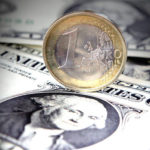 Gold advanced after falling the most in a week on Wednesday on speculations that the Federal Reserve will refrain from scaling back its bond purchases until some point in 2014, most likely in March. Softening physical demand from China and expectations that the U.S. Labor Department will report initial jobless claims fell last week limited gains. Silver, platinum and palladium were little changed but remained on positive territory.
Gold advanced after falling the most in a week on Wednesday on speculations that the Federal Reserve will refrain from scaling back its bond purchases until some point in 2014, most likely in March. Softening physical demand from China and expectations that the U.S. Labor Department will report initial jobless claims fell last week limited gains. Silver, platinum and palladium were little changed but remained on positive territory.
On the Comex division of the New York Mercantile Exchange, gold futures for settlement in December rose by 0.19% to $1 336.50 per troy ounce at 7:59 GMT. Prices held in range between days high of $1 341.80, near Tuesdays three week high, and days low of $1 330.40 per ounce. The precious metal fell by 0.5% on Wednesday, the most since October 11, but extended its weekly advance to over 1.5% on Thursday.
Gold remained near 3-1/2 week high levels amid broad expectations that the Federal Reserve will defer paring its quantitative easing program until 2014 as the 16-day partial U.S. government shutdown likely caused serious damage to the fourth quarter economic growth. The U.S. Department of Labor reported on Tuesday that the U.S. economy added 148 000 jobs in September, sharply underperforming a median forecast of 93 economists surveyed by Bloomberg for a 180 000 surge. August’s reading received an upward revision to 193 000 payrolls from initially estimated at 169 000, signalling that the U.S. labor market lost momentum prior to the 16-day government shutdown.
The U.S. unemployment rate, based on a separate Labor Department survey of households, fell by 0.1% to 7.2% in September, beating expectations to remain flat. However, the participation rate, which measures the number of people who are either employed or are actively looking for work, remained the lowest since August 1978 at 63.2%, indicating that the fall in the unemployment rate was based on people who stopped searching for a job.
The U.S. dollar fell to a two-year low against the euro on Thursday, allowing dollar-priced commodities to regain strength. Separately, the U.S. dollar index, which measures the greenbacks performance against six major counterparts, traded at at 79.30 at 8:00 GMT, down 0.06% on the day. The December contract plunged to a session low of 79.14, the weakest level since September 2012, while day’s high stood at 79.35. The U.S. currency gauge added less than 0.1% on Wednesday and extended its weekly decline to 0.5% on Thursday. A weakening of the greenback makes dollar-priced commodities cheaper for foreign currency holders and boosts their appeal as an alternative investment.
A report by the U.S. Department of Labor today is expected to show that number of people who filed for initial jobless benefits in the week ended October 19 fell to 340 000 from 358 000 in the preceding period.
Alexandra Knight, an economist at National Australia Bank Ltd., said for Bloomberg: “We had poor U.S. payrolls data that gave more confidence that tapering would be delayed. If today’s jobless data came out positively, then you could have a reverse of what we’ve seen over recent days. People might be thinking tapering is now more likely to happen sooner rather than later.”
According to a Bloomberg survey of 40 analysts conducted on October 17-18, the Fed will begin decelerating its monetary stimulus in March. The yellow metal has been tracking shifting expectations for a reduction in Fed’s bond purchases throughout the year and has lost 20% so far in 2013.
Assets in the SPDR Gold Trust, the biggest bullion-backed ETF remained unchanged at 878.32 tons on Wednesday after rising by 6.6 tons on Tuesday, the first increase in holdings since September 19.
Golds gains however were limited on disappointing physical demand in China, the worlds second-biggest consumer. Investors remained wary on speculations for monetary tightening after China’s money-market interest rates rose to the highest in three months on Wednesday. The People’s Bank of China refrained from injecting cash for a second day on concern that ample credit could fuel inflation after the National Bureau of Statistics reported that home prices in four major cities rose to the highest since January 2011, while consumer inflation gained at the fastest pace since February.
Bart Melek, the head of commodity strategy at TD Securities in Toronto, said for Bloomberg yesterday: “Physical demand for gold in China may not be as strong as it was, and the rise in rates there boosts funding costs for precious metals. People are realizing too that the decline in the dollar recently may have been overdone. We’re not seeing new longs coming into the gold market.”
Elsewhere on the precious metals market, silver December futures rose by 0.34% to $22.693 per troy ounce at 7:57 GMT and held in range between days high and low of $22.788 and $22.510. Platinum for delivery in January traded at $1 441.90 an ounce, up 0.16% on the day, and shifted in a days range between $1 446.45 and $1 432.20. Palladium futures for December settlement were little changed at $747.10, up 0.13%. Prices rose to session high of $749.80, while days low stood at $743.60 per ounce.





